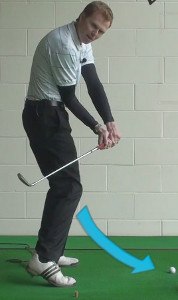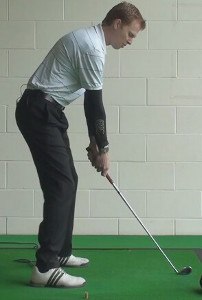
Slowly but surely, Carl Pettersson has become one of the steadiest players on the PGA Tour.
A native of Sweden who played college golf at North Carolina State, Pettersson claimed his fifth career victory in April 2012 at the RBC Heritage. It was his third top-three finish of the year, and further proof that Pettersson may be destined for a spot among the game’s elite.
His swing isn’t the prettiest you’ll see, but it’s obviously effective. Pettersson is a long and relatively straight hitter who does a great job of playing to his strengths.
Unconventional move: As he transitions from backswing to downswing, Pettersson’s hands move into an “over-the-top” position.
Who else does it: Justin Rose
As he reaches the top of his backswing, Petterson’s hands move slightly forward – closer to his head – which would appear to cause an outside-to-inside clubhead path on the descent. That’s common among handicap golfers, but extremely rare in the professional ranks.
Why it’s a problem for amateurs: Golf’s most common malady – the slice – is caused by an over-the-top swing. So are pulls, shots off the heel and toe, and weak drives. An outside-to-in swing, paired with a clubface that’s open in relation to the path, creates rightward sidespin (slice), adds unwanted loft to the club, and delivers a less powerful blow than an inside-to-out path.
How Pettersson gets away with it: His apparent over-the-top move is noticeable, but subtle – only a few inches, at most. And his lower body leads the downswing, preventing the arms from taking over and casting the club too far outside.
Pettersson’s right elbow remains close to his side as he comes down and through, so the clubhead can’t possibly escape onto a true over-the-top path. This elbow action is a major key to keeping the club tracking on an inside angle, and hitting solid shots that start right on target.

The cure: Here are three drills to fix an outside-in clubhead path and get your right elbow in the right place:
- When practicing, place a lightweight object, like a clubhead cover, about 6-8 inches behind the ball on the target line. You’ll have to swing inside-out in order to miss the object.
- Make practice swings without a ball, pausing for two seconds at the top before swinging down. This will help correct your lower body to make the first move coming down. After a few practice swings, try hitting the ball this way. (It can be difficult at first, so be patient with yourself.)
- Place a small towel between your upper right arm and body, then swing. You’ll have to keep the arm tucked close to the body to prevent the towel from falling.






